Anyone who’s lived in Athens will undoubtedly be able to recall occasions when they sat sipping coffee at a small table on a balcony, among flowerpots of basil, carnations, or jasmine, looking out at the unfurled awnings on balconies across the way. They’re likely to have been invited to gatherings at penthouse apartments whose terraces were filled with laughter, music, and numerous reminders to keep it down: “Shhh! We’re disturbing the neighbors!” In Athens, we enjoy good weather for nearly eight months of the year; when March or April comes around, we hose down our balconies, add a couple of plants in pots, light a lantern, and suddenly our house feels larger. Dinner is served al fresco, and the soundtrack might include car horns, the chatter of passersby, the chirping of cicadas – or all of them together, depending on where one lives.
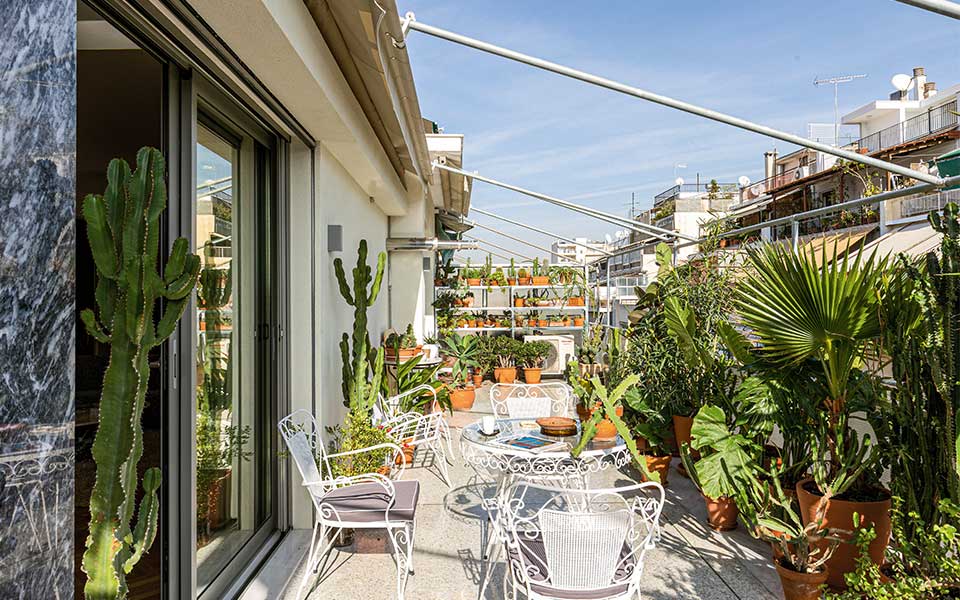
© Alina Lefa
The extension of the house
In contrast to many other European cities, Athens makes full use of its balconies. Some people treat them as storage spaces for items that don᾽t fit indoors, such as the ironing board, or for boxes of unused items. Others outfit their balconies with bamboo furniture or wrought-iron chairs for a retro ambiance and exotic evenings, surrounding themselves with potted greenery. Jewelry designer Yiannis Sergakis says: “Spliting my time between Athens and Paris in recent years, I’ve realized how much I miss having a balcony in France. Of course, having a balcony in Paris is a rare, almost unattainable luxury. If a Parisian has an apartment with a balcony, no matter how small, they show it off with great pride.
“Here, Athenians make the balcony an essential part of daily life. In the era of portable TVs, they watched summer sports events, including the World Cup and the Olympics, outside. They BBQ, dry their laundry, have their morning coffee, and in the evenings, gather with friends.” As for his own balcony in Athens, Sergakis says: “I enjoy it to the fullest. On summer evenings, we host parties with friends, sometimes even listening to concerts from the open-air theatre, the Odeon of Herodes Atticus, next to us. On quiet nights when I’m alone, I can even hear the hooting of owls from the glade of the Acropolis. As for the spring, I’m delighted to spot the hummingbirds, nightingales and parakeets that come down from the surrounding trees to pay me a visit.”
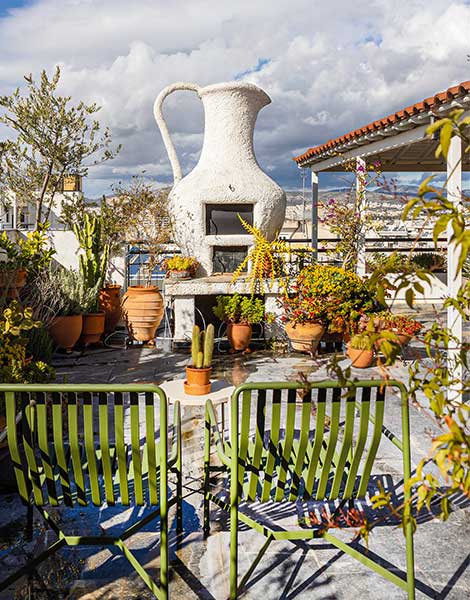
© Alina Lefa
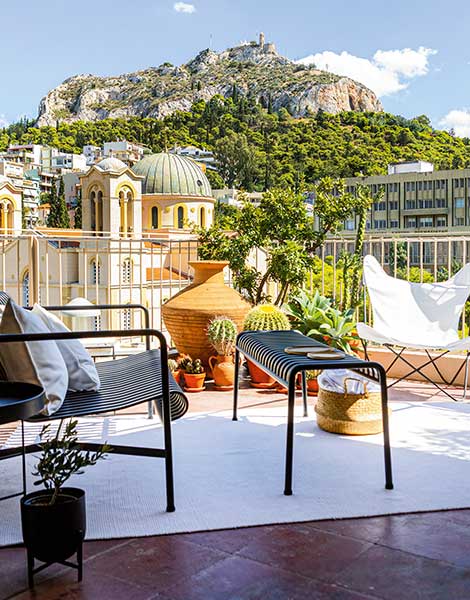
© Alina Lefa
Narrow streets, small balconies
Decades ago, Greece’s capital began to become more densely populated, with new construction springing up, and despite the occasionally flawed aesthetics of the buildings, balconies were always a fixture. Panos Dragonas, Professor of Architecture and Urban Design at the University of Patras, says: “In the interwar apartment buildings, we see the change from bay windows to small open balconies that characterize the distinctive look of areas such as Kolonaki, Exarchia, and Kypseli. After the war, balconies become more standardized and narrower, running uniformly across the facades of typical apartment buildings. After 1985, balconies become bigger and are arranged with greater freedom.”
George Papadakis from the architectural office Cadu says: “Architecture in the Greek world always created externally covered, semi-outdoor spaces, such as the ancient stoas and the hayiati. In modern Athens, it’s inevitable that the balcony, in addition to its crucial role in the life of the inhabitants, also affects the image of the city. The vast majority of buildings, especially those dating from 1960 to 1980, are literally dressed in balconies. The identity of the modern Greek city is shaped by the aesthetics of the balcony and all of its accessories.
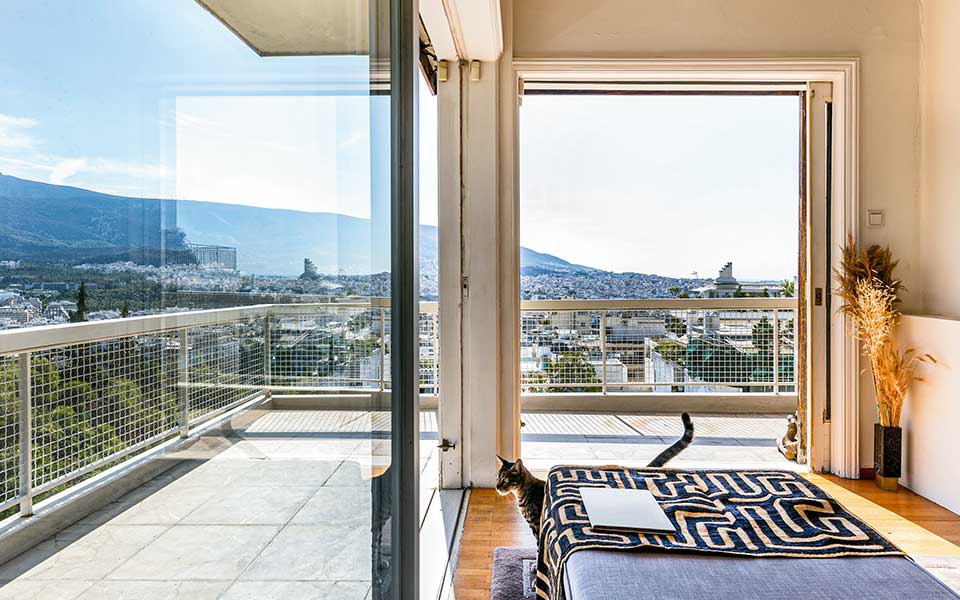
© Alina Lefa
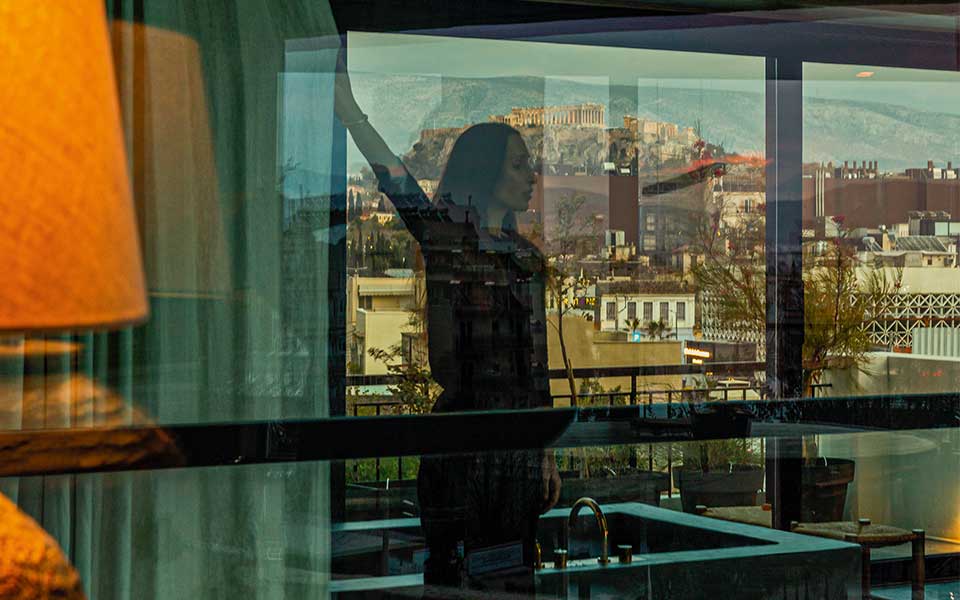
© Alina Lefa
“Today, balconies are constructed under the dictates of the New Building Regulation. A simplified explanation of the legislation is that, generally speaking, they can protrude up to 2 meters from the building, but they cannot be wider than 1/10 of the underlying road. This is the reason for the existence of narrow balconies in areas with narrow streets.”
Speak with any architect working in Athens and you’ll quickly realize that today the balcony is always a crucial concern. Dragonas notes that the phrase of Pericles Giannopoulos, writer and thinker, is often heard in the architecture schools of Greece: “Life in Greece is outdoors.” It’s clear that the city’s climate automatically places balconies on equal footing with interior space; the challenge for the architect is not to end up with a balcony that’s a dead, neutral space not catering to human needs.
The architectural office MoY Studio came up with a number of examples where balconies are underutilized, such as in buildings located on major roads with noise and traffic – like the balconies of the apartment buildings and professional spaces on Vasilissis Sofias Avenue. On the other hand, they observe that even such “useless” balconies may be able to offer something. “It’s not rare to see someone squeezed onto one of those narrow balconies to smoke their cigarette or drink their coffee out in the sun, and right there they have as much space as they need.”
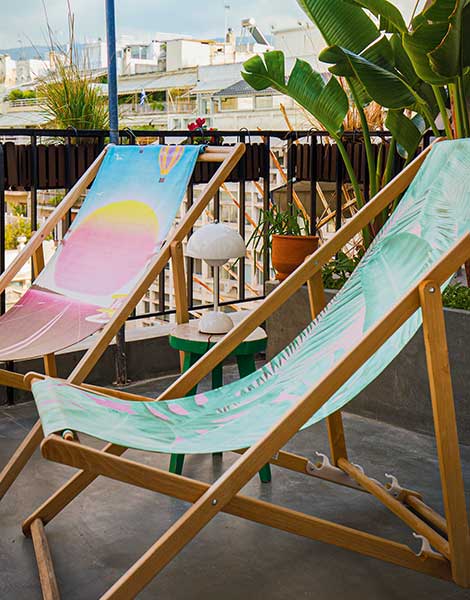
© Alina Lefa
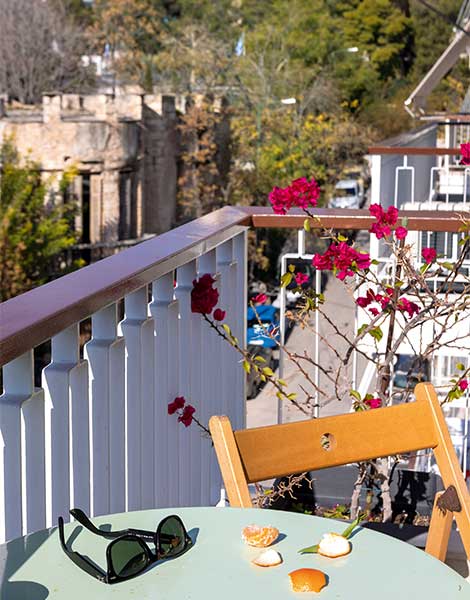
© Alina Lefa
“Where the city’s energy unfolds”
The jewelry designer Ileana Makri has a balcony that puts the Acropolis almost within touch, and she says that this space is, in effect, the heart of her house: “I care for and attend to it as much as the interior of my apartment. I don’t need to do much regarding its atmosphere; the view of the Parthenon does all the work. I only added a table and a cactus I brought from Ecuador – the cactus because, as shamans believe, they create a protective zone.” Similarly, the creative director of G Design Studio, Michalis Georgiou, who lives in a renovated apartment in Exarchia, says that the central part of his life at home is shaped on his balcony: “Every morning before work, I spend two hours caring for the plants and drinking tea. This two-hour period is my decompression time and the source of my own positive energy.
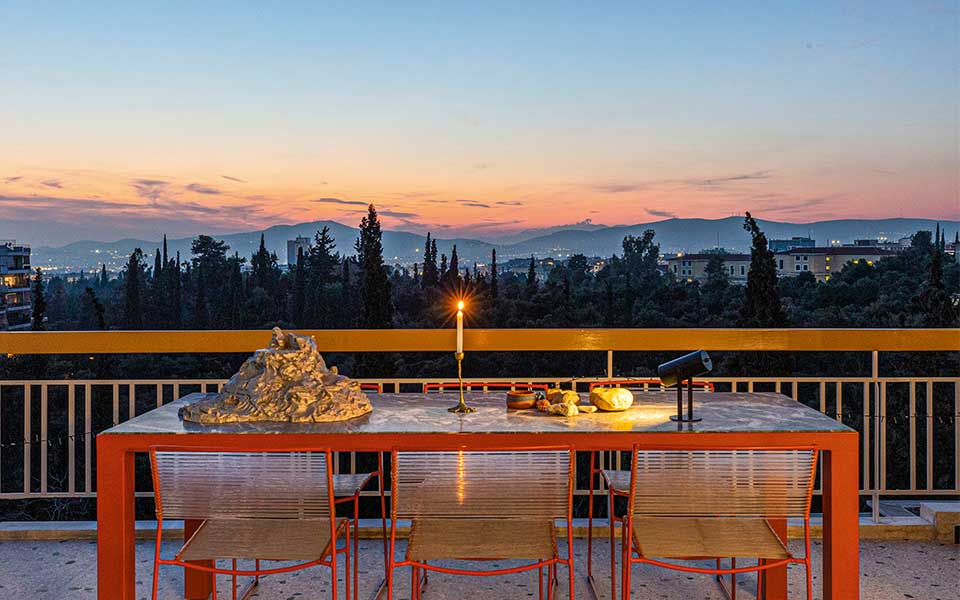
© Alina Lefa
In the summer, the day not only starts but also ends there, whether in the outdoor living room with a view of Lycabettus or in the dining area of the balcony for dinner and wine with friends, which can go on until morning.” This particular balcony is located on the top floor of the apartment building and is full of plants. Therefore, although the neighborhood itself is lively and densely populated, the balcony offers privacy, even outdoors. With renovations of old houses surging in the city, professionals say that in every case, the new owners’ first requirement is not to be seen (or spied on) by the neighbors. Elena Zabeli and Katerina Chrysanthopoulou, from MoY Studio explain their approach to this: “We try to educate owners to accept the presence of neighbors as a natural condition of life in cities, and at the same time, we incorporate elements and uses that allow the balcony to function as a second home, i.e., with a living room, dining room, outdoor kitchen/barbecue, outdoor shower, and even outdoor sleeping areas and hammocks…” Indeed, while the close proximity of other balconies is never interpreted as a luxury, it may have its advantages. Many great friendships or romances started with a friendly word to the stranger behind the glass partition, or even a “Good morning” to the neighbor᾽s dog as it wagged its tail on the balcony next door.
A well-loved song by the famous Greek singer-songwriter Dionysis Savvopoulos waxes lyrical about life on an Athenian balcony. It mentions a pink balloon, a girl smoking, a white sheet blowing in the wind, pigeons and awnings torn by the wind, and other snapshots from the childhood of adults who grew up in Athens. The chorus of the song states simply: “The small balconies have steering wheels, joys, celebrations, silent glances, beautiful years.”












